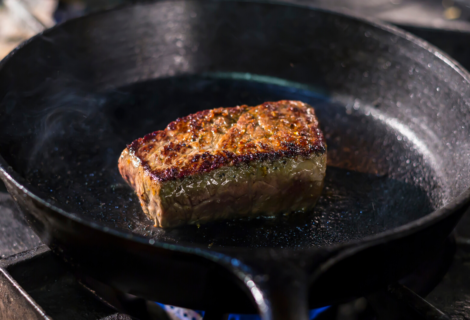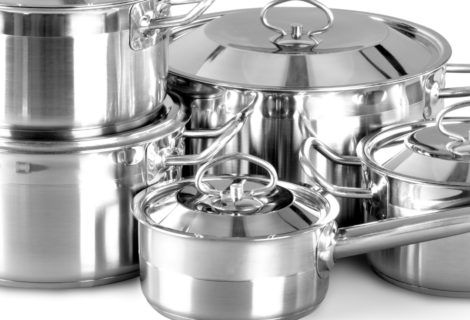Kitchen Staples for the Home Cook (Knives)

It’s all about the Knife Skills
As I walk through places like Bed Bath & Beyond’s kitchen department, I cringe at all the gadgets that they sell, knowing full well that 75% of what they sell can be replaced by a few good knives and a little know-how. I have been given gadget gifts that promise to peel, zest, julienne (think the “Zoodle” craze), slice, dice, make everything nice. None of these tools are a necessity, they cause a lot of clutter in the kitchen, and really most of them can be done with a good knife. At the end of this Kitchen Staples series, I will have a list of items that are useful to have in the kitchen and as I share more recipes, we will learn how to use them.
Making Use of your Knife
So you go to the store, or you’re gifted a knife set that comes in a neat knife block to hold everything safely in one spot. But how many of those knives to you really use? I am guilty of this myself, I use the Chef’s knife (the most commonly used/known knife), I use the steak knives, I use the kitchen shears, and on rare occasions I use the Bread knife (one that I have a love hate relationship with because in the last 23 years of working in kitchens, in that time I have cut myself twice, the first with that devil knife and my carelessness in trying to speed up the process of making a cake). This still leaves four knives and a cheaply made Knife Sharpener (Honing Steel) that rarely get touched except to clean the block itself.
Other than my gripe about the knife blocks dulling your end in the constant removal and insertion in the premade slots, I highly prefer this method of storing your knives, than leaving them in a random drawer (Please Don’t!). Now, if you have a good knife set, don’t throw them out based on my preference. But if you are searching for a new set, or are just starting out, here are some things to consider when buying a knife…
- Chef’s Knife- Used for finely slicing, chopping, mincing, dicing, and disjointing large cuts of meat.
- What to look for: A comfortable handle that fits well in your hand. Balanced weight, yet a strong enough metal that can disjoint meats. There are two types of Chef’s knives and it depends on your preference whether you like the curved blade and “rocking” motion of a French knife, or the flat edge of a Santoku Knife.
- Pairing Knife- Used for slicing, peeling, coring, and delicate knife work.
- What to look for: A comfortable handle, thin blade with a point that comes to a sharp tip. I also have a paring knife with a rounded blade, but this is solely for peeling, and a few serrated pairing knives that are great for steak knives and cutting thin skinned fruits like tomatoes.
- Carving Knife- Used for carving roasts.
- What to look for: A comfortable handle, long, thin blade with a pointed tip, but straight blade (as opposed to the “rock” curve of a chef’s knife. Think a longer version of a pairing knife).
- Serrated Knife- Used for tomatoes, breads, and cakes
- What to look for: Long blade, comfortable handle, and deep pointed serrations.

So the theme here, if you haven’t caught it, is comfort. If the knife is awkward in your hand, it can lead to accidents in the kitchen. You can go around in circles with people about whether you should get German blades vs Japanese blades, or Stamp cut vs forged blades. What it comes down to for the home cook is 1) How well does it hold an edge? and 2) What is my budget? The material and way in which the knife is made will determine the answer to all of these questions, but your budget can be the deciding factor. The two things I would suggest avoiding is a blade that does not go the length of the handle (if it stops at the the handle’s edge it could be dangerous if that blade snaps at the stress point), and a blade that can be honed and sharpened (rather than those serrated knives that claim that you never need to sharpen them. I call them “never sharp” and they are truly a waste of money).
Proper Care
Most knife blocks come with a sharpener in the set, this is actually called a honing steal (Steel for short). The common misunderstanding with this steel is that you use it to sharpen your dull knife. The proper use of this is to “hone” your already sharpened blade to a fine point. On a microscopic level, think if the knife’s edge having little tiny teeth. As you use the knife, the teeth bend and fold causing the dull edge. By using both a sharpening stone for monthly upkeep to remove any dings or chips in the knife’s visible surface, and the steel before and after use (my husband often scolds me for not doing when he is sharpening the knives).

Any professional cook will tell you that there is Nothing better than having a sharp knife, we tend to seek out the one sharp “community knife” in the kitchen to do our prep work! As I touched on before, properly storing your knives will help with long term care and performance of your knife. NEVER STORE YOUR KNIVES IN A DRAWER (the only exception is my pairing knives which are kept in an office organizer bin with the tip always facing the back of the drawer and little kids have always been warned where the knives are and why to avoid them). If you have a knife block, that is fine, but if you are like me and have pieced your set together (a budget friendly way to Good knives) then purchasing a knife magnet is a great investment to store them on the wall above the reach of little hands.
A dull knife is Far more dangerous than a sharp one!





Recent Comments